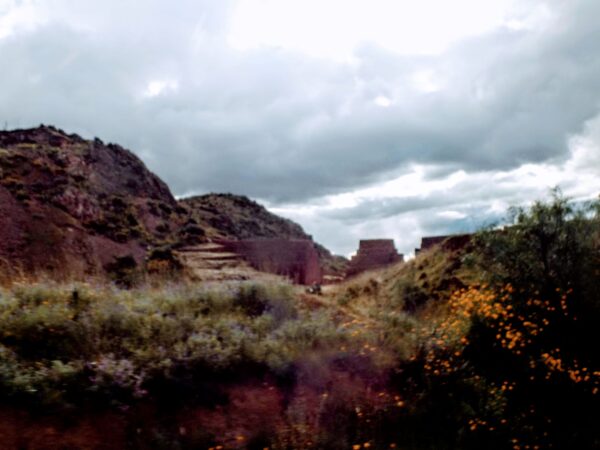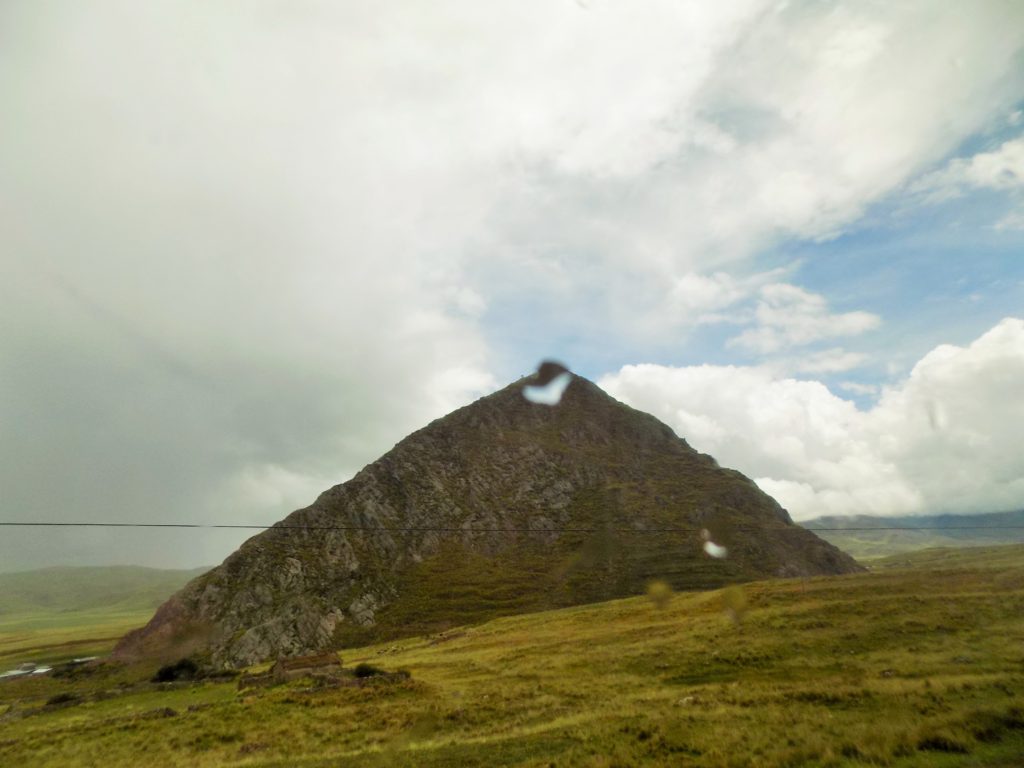The oldest city in the Americas.
In recounting this trip, I’ve twice touched upon the subject of Huanca Prieta the controversial site north of Lima that appears to upend the conventional assertion about the time the first humans arrived in South America. Another such site, Ayacucho, which is more or less halfway between Lima and Cusco, also has evidence of human habitation dating between 15,000 and 18,000 years ago. Thus, it should come as little surprise that evidence of pre-ceramic human occupation has been found in the Cusco province that has been dated to 5,000 BCE.
Five years ago, archaeologists discovered a 3,000-year-old burial site in the area of Cusco called Marcavalle just south of where the airport is today. The site contained three adults (some wearing beaded necklaces), an adolescent, and a child in three graves. The archaeologists also uncovered tools made from obsidian, camelid bones, and ceramic fragments bearing artistic motifs known to be associated with the Marcavalle culture. Taken together this collection of bones and artifacts indicate the first permanent settlement in what is today’s Cusco. (You can see a video of the discovery here.)
Numerous other cultures followed the Marcavalle including the Chanapata culture (about 800 BCE) through to the Qotakalli (600 CE), the Wari (750 CE), continuing chronologically to the Sahuares, the Huallas, and the Alcahuisas who occupied the area until the arrival of Manco Qhapaq and the Inkas.
As I proceed, I’ll randomly share looks at some of the countryside we passed through en route from Puno. Here’s the first.
The navel of the world.
In discussing the Bolivian side of Lake Titikaka, I introduced you to the legend of Manco Qhapaq the progenitor of the Inkas. While the legend described in that post is just that, according to Waldemar Soriano’s book Los Incas, it’s likely that Manco Qhapaq was a real person who succeeded his father as the head of an ayllu. (The ayllu is a common form of tribal community in the Andes that’s usually comprised of extended families but that sometimes incorporated non-related families for increased security.)
While this particular ayllu seems to have been nomadic before Manco Qhapaq became its leader or mallku, it was he who led them to a more permanent settlement in a small area of the Cusco Valley. From humble beginnings in the 13th century, this settlement would become the center of the Inka empire – the land they called Tawantinsuyu. They would call the city Qosqo meaning the navel of the world.
There may be some young and ambitious travelers reading this who have thought about walking the famous Inka Trail to Machu Picchu. While there is, indeed, a trail to walk, it is but one connecting trail in a larger road system that stretched more than 40,000 kilometers that the Inkas called the Qhapaq Ñan or Royal Highway. (Although constructed exclusively for foot traffic, this system is about three times the size of Germany’s autobahn and more than half the size of the U S Interstate Highway system. Doubtless, I will return to this remarkable feat of engineering throughout this journal.) For now, note that the main mountain road shown below
[Map from Jeremy Norman’s Historyofinformation.]
stretches north from Cusco to Quito and south to Mendoza, Argentina. As we will soon learn, a road to each sector of the empire – the Antisuyu of the upper Amazon, the Chinchasuyu that spanned the coast from central Perú as far north as Colombia, the Kollasuyu which encompassed the altiplano, and the Kuntisuyu that formed a triangular shape from Cusco west to the coast and south to an area close to Cocachacra – began at what is today the Plaza de Armas in Cusco.
Why the Inkas are not Inka and other random facts.
Because this is the outset of a dive into the history and culture of the people we call Inkas, I’m going to pause for a moment in my discussion of Cusco to lay some foundational facts. The first of these is that at any given time there was only one Inka. He was the Sapa Inka and was the emperor or head of state if you prefer. Perhaps the Spaniards were simply confused or perhaps the people deliberately tried to confuse them regarding the name of the ruling tribe and perhaps their Quechua speaking descendants know and maintain the secret. We can only be certain that as yet we have no record and no knowledge of any collective self-referential term the people used. Since it is the common term, however, I will continue to use Inkas throughout. Here’s another look out the window.

We do know there were several strata of Inkan society. There was apparently a class of nobility the Spanish called orejones (literally ‘big ears’). The men of the Inka nobility not only pierced their ears but wore plugs of wood, gold, or silver depending on their rank. These could be as large as five centimeters in diameter. In Quechua, they were called pakoyoq or “ear plug men”. The custom long predates the Inkas.
(Speaking of Quechua, this is the preeminent indigenous language in Perú. It may or may not have been used by the Inka to describe the common language used across the Tawantinsuyu. That language was apparently called Runa simi or common tongue. As I do with the term Inkas, I will generally use Quechua as the linguistic reference.)
We know of three other strata in the Inkan social hierarchy. They are the runa (common people), the mitmaes or mitmaquna (displaced people), and the yanaquna (servants).
The Inkas had a policy of separating and relocating entire ethnic groups. These were the mitmaes. The principal purpose was to break any potential political alliances before they could reform and rise in revolt. Secondarily, newly displaced or rebellious strangers could be housed with loyal mitmaes in the hope that they would eventually assimilate. Recalcitrant mitmaes were transplanted to secure areas of the empire where they would be a minority population and could be closely monitored.
The yanaquna were servants to the orejones and other Inkan elites. While those born into the category (rather like the Indian caste system) weren’t compelled to work as slaves, their position was simply seen as hereditary. Sometimes people would leave their allyus and choose to work in service to the nobility which indicates that the work associated with this class wasn’t viewed as intolerable and might even have had some measure of attractiveness. Their tasks would range from herding to fishing to making pottery and other domestic tasks.
Now that you know a little more about the Inkas, I’ll pick up the narrative about Cusco in the next post looking at why the Inka chose to center their empire there and how the city developed.


